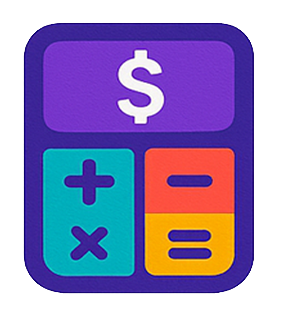Graphing And Programming Calculators
Graphing and Programming Calculators: Advanced Tools for Modern Problem-Solving
In the world of mathematics, science, engineering, and computer programming, calculators have evolved far beyond simple arithmetic devices. Today’s advanced Graphing and Programming Calculators offer powerful capabilities that support complex calculations, data visualization, and algorithmic logic. These advanced tools are invaluable for students, educators, engineers, and professionals who need more than just basic operations.
In this article, we explore what graphing and programming calculators are, how they differ, their key features, and why they are essential tools in both educational and professional environments.
What Are Graphing and Programming Calculators?
Graphing Calculators
A Graphing Calculator is a handheld or digital device capable of plotting graphs, solving simultaneous equations, and performing complex mathematical functions. It allows users to visualize equations and data on a coordinate system, making it ideal for algebra, calculus, and statistics.
Programming Calculators
A Programming Calculator extends beyond numeric computation by enabling users to write and run code. These calculators support basic programming languages (often a variation of BASIC or Python) and allow for algorithmic logic, iterative functions, and data manipulation.
Both types often come combined in one device, especially in modern models from brands like Texas Instruments (TI), Casio, and HP.
Key Features of Graphing and Programming Calculators
📈 Graphing Capabilities
Plot multiple functions on the same axis
Zoom in/out for better analysis
Trace points on a graph to find coordinates or intercepts
Analyze function behavior (e.g., increasing/decreasing, asymptotes)
💻 Programming Functions
Write custom programs using built-in or downloadable languages
Automate repetitive calculations
Store user-defined formulas and functions
Create logic-based decision trees and loops
🧮 Advanced Mathematics
Solve equations symbolically or numerically
Perform calculus operations (limits, derivatives, integrals)
Handle matrices, vectors, and complex numbers
Conduct statistical analysis (regression, standard deviation, mean)
🗂️ Memory and Storage
Save multiple equations, graphs, and programs
Export data to computers or cloud storage (in advanced models)
USB or wireless connectivity for file transfers
🔄 Upgradable Systems
Some calculators support firmware updates
Download apps or new functionalities from the manufacturer
Educational Benefits
Graphing and programming calculators are widely used in high school and college-level courses, particularly in:
Algebra and Pre-Calculus
Calculus AB/BC
Linear Algebra
Statistics and Probability
Physics and Engineering
Computer Science
They help students learn by visualizing mathematical relationships and testing logic-based algorithms. In fact, many standardized tests such as the SAT, ACT, and AP exams allow specific models of graphing calculators.
Professional and Real-World Applications
Beyond education, these calculators are used in professional fields:
🧑🏫 Education
Teachers use graphing calculators to demonstrate mathematical concepts interactively in the classroom. Programming calculators help introduce students to basic coding concepts.
👷 Engineering
Used for signal processing, circuit analysis, control systems, and structural design, engineers rely on calculators for quick calculations and data visualization.
📊 Data Analysis
Graphing functions allow users to input data sets and perform regression analysis, a key part of business intelligence and scientific research.
🧠 Computer Science
Programming calculators provide a gateway into logic building and help students understand the fundamentals of computational thinking.
Top Models of Graphing and Programming Calculators
Here are some of the most popular models:
TI-84 Plus CE (Texas Instruments)
User-friendly interface
Graphing, statistics, programming features
Color display and USB connectivity
Casio fx-CG50
3D graphing capabilities
Built-in Python programming
High-resolution color display
HP Prime Graphing Calculator
Touchscreen and CAS (Computer Algebra System)
Full-color graphing
Advanced programmability and connectivity
NumWorks Graphing Calculator
Open-source codebase
Built-in Python environment
Lightweight, modern design
Online Graphing and Programming Tools
Not everyone needs a physical calculator. There are powerful online graphing and programming calculators available, such as:
Desmos – A free web-based graphing calculator known for its ease of use and beautiful visualizations.
GeoGebra – Combines graphing, geometry, algebra, and calculus tools in a single platform.
WolframAlpha – Offers both analytical and graphical results with advanced programming capabilities.
These tools are great for quick calculations, classroom demonstrations, or homework help.
Advantages of Graphing and Programming Calculators
✅ Interactive Learning
Students learn faster by visualizing abstract concepts like functions, limits, and derivatives.
✅ Code Practice
Programming functions help develop logical thinking and coding skills in a controlled environment.
✅ Exam Approved
Many calculators are approved for use in exams, giving students a practical edge in timed tests.
✅ Portability
Graphing calculators are compact yet powerful, making them easy to carry and use anywhere.
Limitations and Considerations
Cost: Advanced models can be expensive, ranging from $90 to $200 or more.
Learning Curve: Some students may find the interface or commands difficult initially.
Limited Display Size: Physical calculators have small screens compared to tablets or computers.
Update Dependency: Some features require firmware updates, which can be confusing for beginners.
Despite these challenges, the benefits typically outweigh the limitations, especially when used consistently.
Final Thoughts
Graphing and Programming Calculators are indispensable tools for anyone working with mathematics, science, or programming. They provide both computational power and visualization capabilities that enrich the learning and problem-solving process. Whether you’re a student aiming to ace exams or a professional tackling complex engineering calculations, these calculators offer the versatility and functionality you need.
Investing in a reliable graphing or programming calculator — or using an advanced online tool — is a smart step toward mastering advanced math and computational thinking.
Frequently Asked Questions (FAQs)
Q1: Can I use a graphing calculator on standardized tests?
Yes, many exams like the SAT, ACT, and AP tests allow specific graphing calculator models.
Q2: Can I write code on these calculators?
Yes, many programming calculators support Python or TI-BASIC for custom coding.
Q3: Are there free alternatives online?
Yes, tools like Desmos, GeoGebra, and WolframAlpha offer powerful features for free.
Q4: What is the difference between a scientific calculator and a graphing calculator?
Graphing calculators support plotting and advanced algebra, whereas scientific calculators focus on basic functions without graphing.
Q5: Do I need a programming calculator if I already use a computer?
Programming calculators are useful for quick, portable logic building and learning fundamental coding principles.
